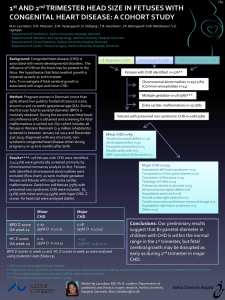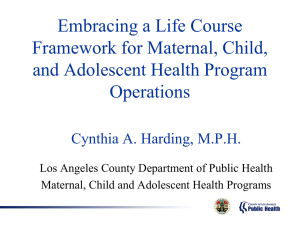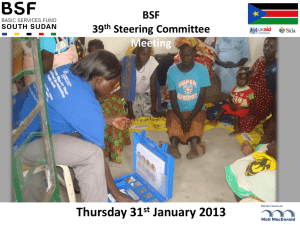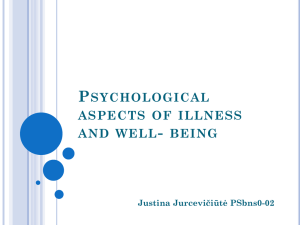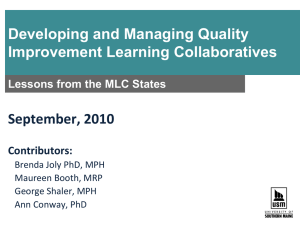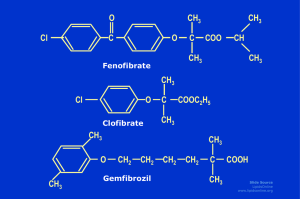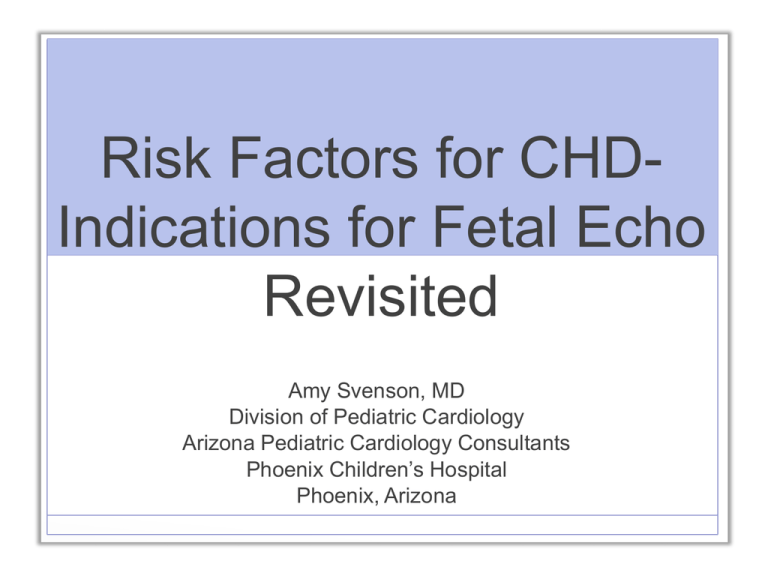
Risk Factors for CHDIndications for Fetal Echo
Revisited
Amy Svenson, MD
Division of Pediatric Cardiology
Arizona Pediatric Cardiology Consultants
Phoenix Children’s Hospital
Phoenix, Arizona
None
Screening for CHD
• Congenital heart disease continues to be the
most common congenital malformation, at a rate
of ~8/1,000 live births.
• Most cardiac defects are screened for on the
routine 18-20 week anatomy scan by the OB, but
the rates of detection of CHD remain low
• At 20 weeks gestation, the fetal heart is a little
bigger than the size of a quarter
Screening for CHD
• Cardiac anomalies are among the most frequently
missed congenital malformations and rely heavily
on the expertise of those performing the exam
• Those specialized physicians performing and
interpreting detailed fetal echocardiograms can
detect nearly all cases of CHD, but they are a very
limited resource
• Thus, much research has gone into identifying
markers for CHD outside of the detailed fetal
echocardiogram
Screening for CHD
• Maternal patients may be referred for a detailed
fetal echocardiogram by a qualified specialist if:
• the basic screening ultrasound is abnormal
• Concern for structural heart defect
• Concern for abnormal heart rhythm
• there is a recognized risk factor that raises the
likelihood of congenital heart disease beyond what is
expected in the low risk population
Which patients are
considered to be at
increased risk and thus
should be referred for a
detailed fetal
echocardiogram?
Fetal indications
• suspected cardiac anomaly or abnormal cardiac axis
•
incomplete cardiac evaluation on OB screening ultrasound
• Unexplained polyhydramnios
• chromosomal abnormalities
• extracardiac abnormalities
• Arrhythmias (50% of fetuses with CHB have complex CHD)
• non-immune fetal hydrops (15-20% are of cardiac etiology)
• increased nuchal translucency
• Monochorionic twins
Maternal indications
• Maternal metabolic disorders
• Pre-gestational diabetes or early onset diabetes
during pregnancy
• 6-10% congenital malformation rate, of which 40-50% are
cardiac
• Structural defects (TGA, DORV, VSD, heterotaxy
syndrome)
• Hypertrophic cardiomyopathy (late 2nd or 3rd trimester)
• Maternal PKU (7 fold increase in CHD)
Maternal indications
• Autoantibodies (anti-Ro/SSA and anti-La/SSB)
associated with Sjogren syndrome (40-95%) and
SLE (15-35%)
• 1-2% risk of complete heart block
• Recurrence risk of 15-20%
• Pregnancies conceived with assisted reproductive
technology (ART)
• Exposure to known teratogens or certain
medications
Familial indications
• Family history of CHD in a first degree relative
• 2-3% recurrence risk if a sibling has CHD
• 2% recurrence risk if dad has CHD
• 5-10% recurrence risk if mom has CHD
• Left heart obstructive lesions appear to have a
higher recurrence risk
Familial Indications
• Inheritable genetic syndrome
• Tuberous sclerosis (intracardiac tumors)
• Marfan syndrome (AV valve abnormalities,
dilated root, CM)
• Ellis-van Creveld syndrome (AV canal, coarc,
HLHS)
• Noonan syndrome (pulmonary stenosis, HCM)
• DiGeorge/velocardiofacial syndrome (TOF, IAA,
truncus arteriosus)
• Maternal LQTS
APCC experience
*Database collected and managed by Lynn Litwinowich, APCC fetal nurse coordinator, from January 2011 to
January 2014
Assisted Reproductive Technology
ART
• Fertility related services (artificial insemination,
inductors of ovulation)
• Removal of a woman’s eggs from her body,
“mixing” them with sperm to make an embryo, and
then reintroduce them to the woman’s body
• In vitro fertilization/IVF (1978)
• Intracytoplasmic sperm injection/ICSI (1992)
• Represents 1% to 4% of births in developed
countries
ART
• First infant born to ART was over 30 years ago (1978)
• CDC started collecting data on ART in the US in1996
• National data from the CDC on ART in 2010:
•
•
•
•
•
147,260 total ART procedures
47,090 live births= 61,564 infants
ART contributed to 1.5% of all US live births in 2010
ART contributed to 20% of all multiple births
46% of infants conceived with ART are multiples
ART
• The majority of the more recent population based
studies do show a statistically significant increase
in birth defects in pregnancies utilizing ART versus
natural pregnancies.
• Is this increased risk due to the ART protocols
themselves or the underlying disturbance leading
to a couples infertility?
• There are few studies looking at the relationship of
specific birth defects and ART
ART and the risk of CHD
• Tarabit, K. et al., Euro Heart J, 2011
• Utilizing the Paris Registry of Congenital Malformations
• Compared exposure to ART between cases of CHD vs.
other malformations in chromosomally normal infants
(picked malformations that have not be previously reported
to be associated with ART)
• 4.7% of children born with CHD versus 3.6% of children
born with a different malformation (p= 0.008) were exposed
to ART
• 40% increase in the overall risk of CHD without
chromosomal abnormalities in children conceived following
ART after taking into account maternal age, socioeconomic
factors, and year of birth
ART and the risk of CHD
• Specific types of CHD were more commonly found
in children exposed to ART (IVF and ICSI)
including:
• Malformations of the outflow tracts
• Abnormalities of the ventricular-arterial connections
• Double outlet right ventricle
ART and risk of all birth
defects
Davies, M et al., NEJM, 2012
• Utilized the Australian registry of births and
terminations between 1986 and 2002
• Compared 4 group types for identification of major
birth defects up to 5 years of age:
1. ART pregnancies
2. Spontaneous pregnancy but with a history of a previous
ART birth
3. Spontaneous pregnancy but with a history of infertility
(no ART)
4. Spontaneous pregnancy with no history of infertility
ART and risk of all birth defects
•
8.4% of ART pregnancies vs.. 5.8% of non-ART pregnancies had
a major birth defect present (OR 1.47)
•
The risk is highest for ICSI (OR 1.77) than IVF (OR 1.26)
•
There is an increased risk of birth defects in pregnancies of
women with history of infertility
•
When comparing pregnancies with multiples, there was no
significant increase in risk of birth defects
•
ART pregnancies were more likely to have multiple birth defects
•
Specifically, the risk for cardiovascular, musculoskeletal,
urogenital, GI defects and cerebral palsy had the highest OR.
ART and risk of all birth
defects
• The increased risk of birth defects for IVF, but not
ICSI, became insignificant when adjustments were
made for maternal age, maternal conditions in
pregnancy, etc.
ART- the U.S. experience
Kelley-Quon, L. et al., J of Ped Surg, 2013
• Utilized the California Infant and Maternal Birth
Cohort Dataset (2006-2007)
• California currently has the highest national rates
of infants born after ART (66% ICSI)
• No significant increase in birth defects when using
fertility related services (ovulation induction and
artificial insemination) alone
ART- the U.S. experience
• After adjusting for maternal and infant factors,
there was an overall increase in birth defects
associated with ART pregnancies when compared
with naturally conceived controls (9% versus
6.6%, p=<0.001)
• Specific organs affected:
•
•
•
•
Eye (0.3% vs.. 0.2%, p= 0.008)
Head and neck (1% vs. 0.7%, p= 0.03)
Heart (4.8% vs. 3%, p= <0.001)
GU (1.5% vs. 1%, p= 0.002)
ART- a review of the
literature
Simpson, JL, Seminars in Fetal & Neonatal Med, 2014 (in press)
•
literature review of 50 of the large population based cohort
studies to date
Conclusions:
•
ART is associated with a small increase in birth defects
(baseline anomaly rate 2-3% vs. 3-4% for ART, OR 1.3)
•
No particular organ system seemed disproportionately affected
other than sex chromosomal abnormal and hypospadias in
ICSI
•
No additive risk for exist in ART twins compared with non-ART
twins
ART- long term CV profile
Valenzuela-Alcaraz et al., Circulation, 2014
• Prospective cohort study to evaluate 100 ART
pregnancies and 100 spontaneous pregnancies
• Patients evaluated at 28-30 weeks prenatally, neonatal
(1st month of life), and 6 months of age to
comprehensively assess cardiac and vascular
function.
• Parameters evaluated included: cardiac dimensions,
ventricular sphericity index, wall thickness, ejection
fraction, stroke volumes, AV valve annular
displacement, tissue Doppler
ART- long term CV profile
• Demonstrated the presence of cardiac and
vascular remodeling in fetuses and infants of ART
pregnancies
• Fetuses conceived by ART showed more globular
hearts, increased wall thickness, decreased right
longitudinal function, impaired relaxation and
dilated atria (but still mostly within normal limits).
• These differences persisted after birth
Nuchal Translucency
Nuchal Translucency
• Hypoechogenic fluid between the skin and the
subcutaneous tissue that covers the cervical spine
in all fetuses
• Seen on ultrasound at 11-14 weeks gestation, and
then regresses
• Pathophysiology remains unknown, but this is the
time period where the fetal lymphatic system is
still developing and the placental resistance is
high
Nuchal Translucency
Nuchal Translucency
• Strong association with fetal aneuploidy when
increased
• Non-specific maker for a disturbance in normal
early development.
• 95th percentile measurement increases with GA
but is ~ 2.5 mm for an 11-14 week fetus
• 99th percentile is ~3.5mm
Nuchal Translucency
• Thus far in the literature, there is consensus that
an increased NT in a fetus with a normal
karyotype is associated with an increased risk for
congenital heart disease
• There also appears to be agreement that the more
abnormal the NT measurement is, the higher he
risk for a major congenital heart defect.
Nuchal translucency
Hyett et al., 1999, BMJ
• Retrospectively analyzed 29,154 singleton
pregnancies with presumed normal chromosomes
• Evaluated for major CHD in those pregnancies
(and up to one month postnatally) identified to
have an NT between 95-99th percentile
• 55% of fetuses with major CHD were associated
with an increased NT at 10-14 weeks gestation
Nuchal Translucency
• Major CHD occurred in 1.7/1,000 live births
• The prevalence of CHD was 0.8/1,000 live births if the NT
was <95th percentile but jumps up to 63.5/1,000 if the NT
was >99th percentile
Nuchal translucency
Hyett et al. continued
Nuchal Translucency
Sotiriadis, A., Ultrasound Obstet Gynecol, 2013
•
Pooled all available published data on nuchal translucency and
congenital heart defects between Jan 1990 and Dec 2012
•
20 large studies met inclusion criteria
•
205,232 total fetuses, 537 fetuses with major CHD and normal
karyotypes were screened and evaluated
•
61% of major CHD cases had an NT <95th percentile (normal)
•
16% of major CHD cases had an NT between the 95th and 99th
percentile
•
23% of major CHD cases had an NT >99th percentile
Nuchal Translucency
Conclusions from Sotiriadis et al.:
• Sensitivity and specificity of identifying major CHD
if the NT is >95th percentile is 44.4% and 94.5%
respectively
• Sensitivity and specificity of identifying major CHD
if the NT is >99th percentile is 19.5% and 99.1%
respectively
• The risk for major CHD is more than 20 times
increased if the NT is >99th percentile
NT- pooled data
*In general, there was a high heterogeneity in the data sets
Maternal obesity
Maternal Obesity
Data from the National Health and Nutrition
Examination Survey, 2011-2012
• 34.9% of adults were obese in 2011-2012
• Highest among middle-aged adults, when
compared to younger and older adults
• Obesity is higher among certain ethnicities: black
(47.8%) and Hispanic (42.5%) adults
Imaging for a BMI of 20
Imaging for a BMI of 65
Adult Obesity Rate by State, 2012
Obesity
• Maternal obesity has long been linked to an
increased risk for infants with neural tube defects
• Over the last decade, data is accumulating that
also links maternal obesity to infants with CHD
Obesity
Mills, J, American Journal of Clinical Nutrition, 2010
• Maternal BMI in 7,392 infants with CHD and
56,304 controls without major malformations born
during 1993 to 2003 in New York State
• Overweight defined as BMI 25-29.9
• Obesity defined as BMI >30, morbid obesity >40
• Overweight women(BMI 25-30) were not at an
increased risk to have a child with CHD
Obesity
Findings:
• Overweight women(BMI 25-30) were not at an
increased risk to have a child with CHD
• all obese women were significantly more likely than
normal weight women to have a child with a CHD (OR
1.15)
• Found an increasing risk of having a child with CHD
with increasing maternal BMI
• 15% higher risk for all obese mothers having a child
with CHD if the BMI was >30 and a 30% higher risk if
the maternal BMI was >40.
Obesity
Lui et al., Circulation, 2013
•
Population based cohort study of all live births in Canada 2002
to 2011 looking the association of maternal conditions and CHD
in their offspring.
•
They were able to separate out very specific maternal
conditions and specific types of CHD utilizing ICD-10 coding
•
2.3 million infants screened with a prevalence of CHD 10/1,000
(excluding PDAs in preemies) and 2.2/1,000 being severe CHD
•
Maternal conditions evaluated included: age, tobacco use,
substance use, obesity, DM, HTN, thyroid disorders, CHD,
CAD, anemia, connective tissue disorder, epilepsy
Obesity
• CHD prevalence was significantly higher among
women with chronic medical conditions, and
specifically with multifetal pregnancy, DM, CHD
and systemic connective tissue disease having
the strongest association
• Maternal obesity was associated with a 1.5 to 2x
greater risk for CHD (consistent with previous
studies)
“Ultimately, the decision of whom to refer for
formal fetal echocardiography should reflect
both the perceived likelihood of fetal heart
disease and the additional expertise anticipated
from referral” - Mark Sklansky
Referenced from Textbook: Creasy & Resnik’s Maternal-Fetal Medicine,
Chapter 19. “Fetal Cardiac Malformations and Arrhythmias- Detection,
Diagnosis, Management and Prognosis”
THANK
YOU!

